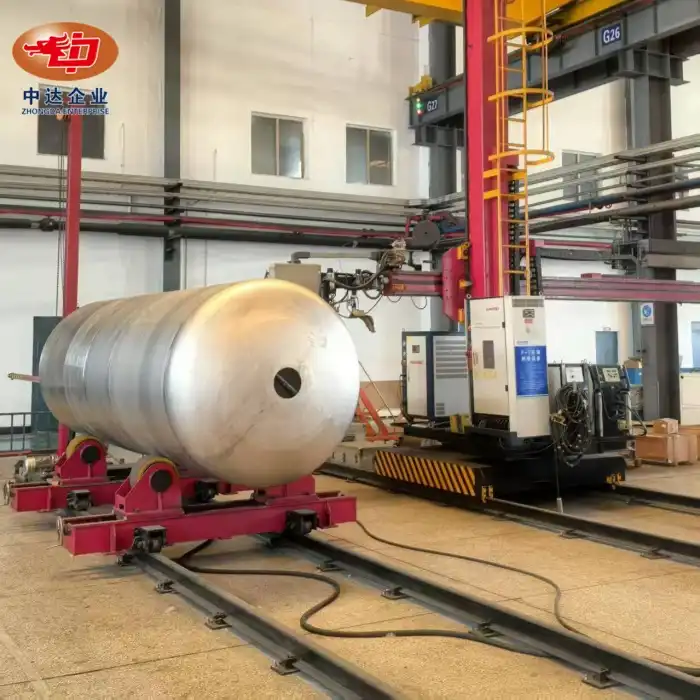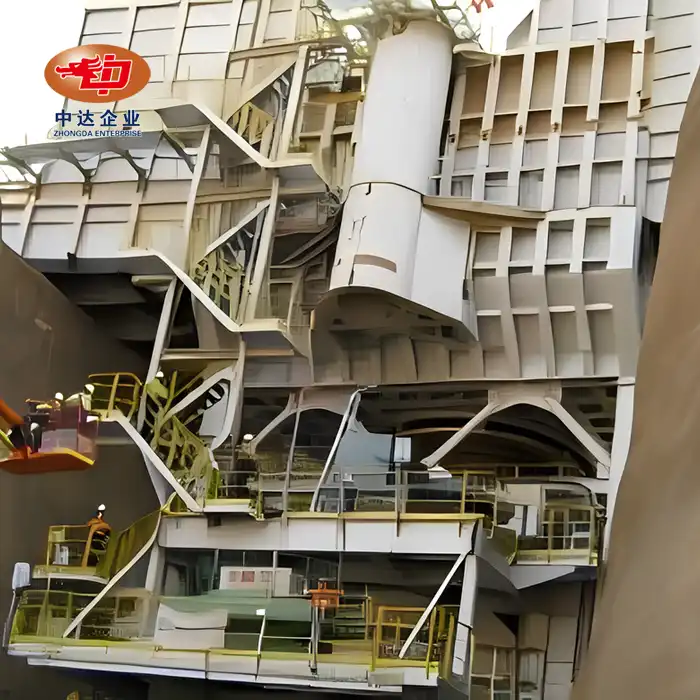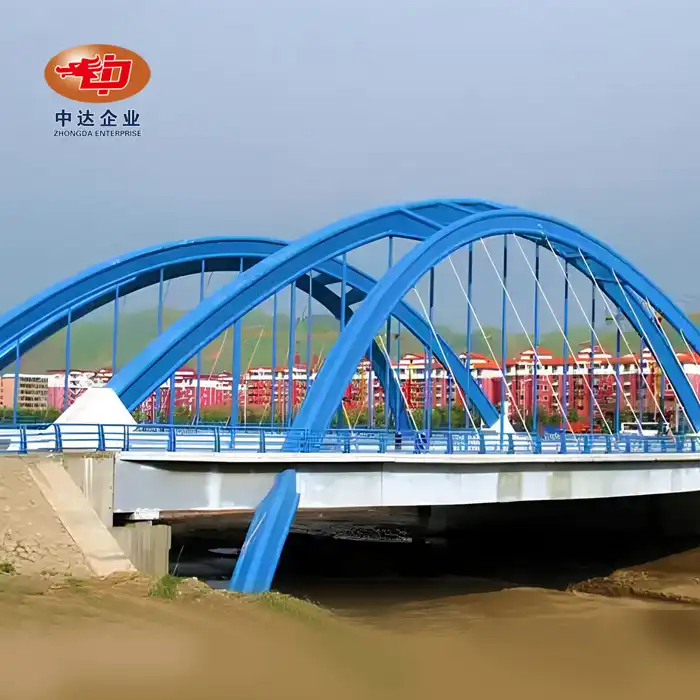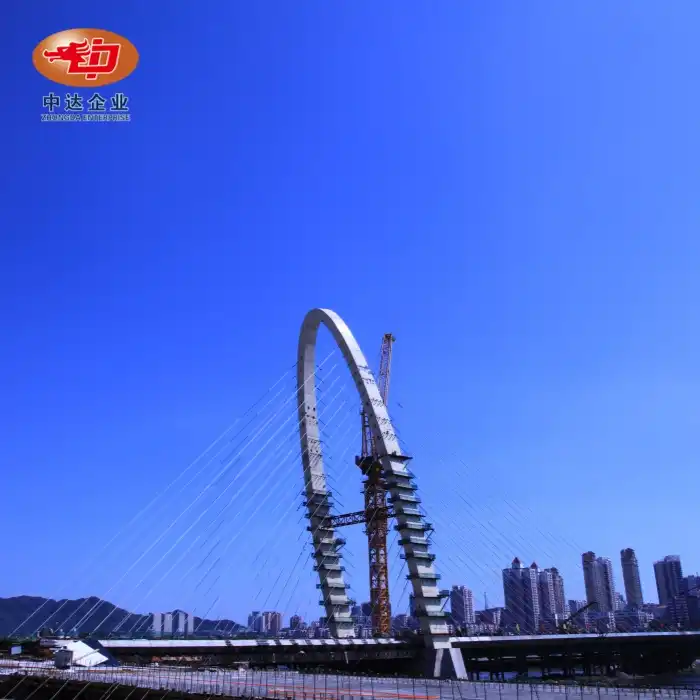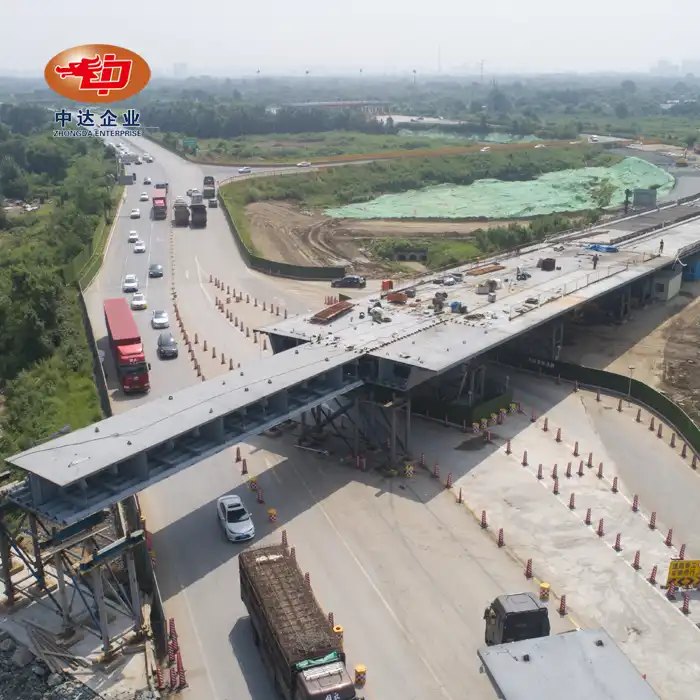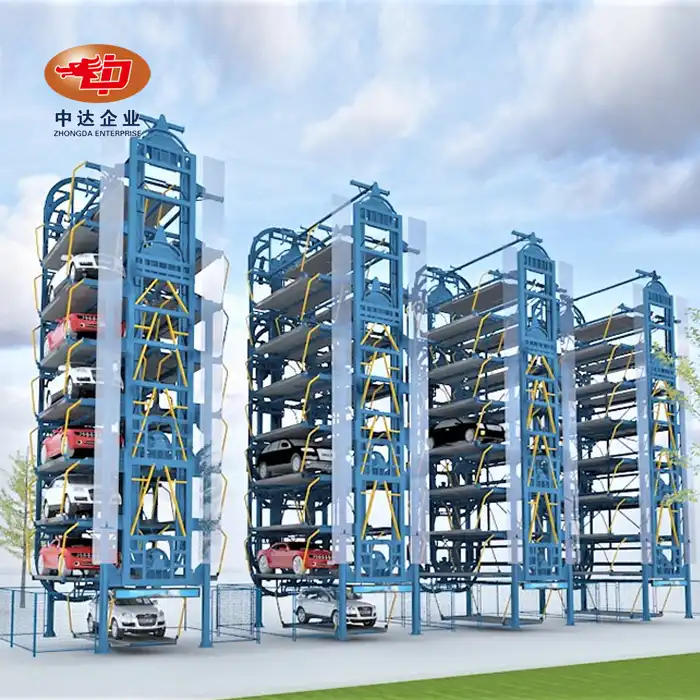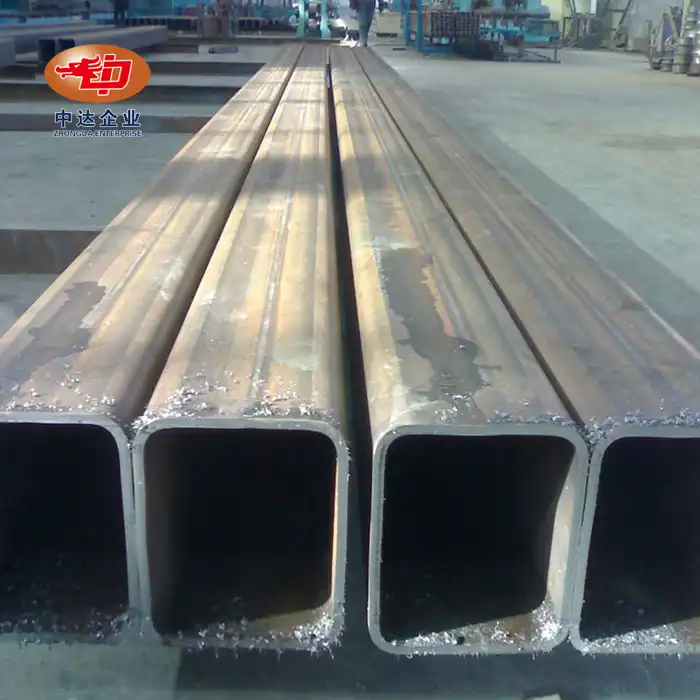
Can Crane Beams Be Customized?
Yes, crane beams can indeed be customized to meet specific project needs. At Zhongda Steel Structure, we understand that every construction or industrial project has unique requirements, whether it's load capacity, span length, or environmental conditions. Customization ensures that overhead crane systems operate efficiently and safely, tailored to the demands of industries like mining, manufacturing, or infrastructure development. With advanced technologies like BIM-driven prefabrication and precision cutting, we craft crane beams that align perfectly with your design specifications, ensuring durability and performance. Curious about how customization can benefit your project? Let's dive deeper into the possibilities and advantages of tailored crane beam solutions.
Understanding the Basics of Crane Beam Customization
What Are Crane Beams and Their Role?
Crane beams, often referred to as runway beams or overhead crane supports, are vital components in industrial and construction settings. These structural elements support the movement of overhead cranes, enabling the efficient lifting and transportation of heavy loads. Typically made from steel, they are designed to withstand immense weight and dynamic forces. Their primary role is to provide a stable track for cranes, ensuring smooth operations in environments like factories, warehouses, and shipyards. Customization of these beams allows for adaptations to specific crane types, load capacities, and operational demands, making them indispensable in modern engineering projects.
Why Customization Matters in Modern Projects?
In today's fast-paced construction and industrial sectors, off-the-shelf solutions often fall short. Every project comes with its own set of challenges - whether it's a mining facility in Australia requiring beams to endure extreme temperatures or an Arctic bridge in Russia needing corrosion-resistant materials. Customization of crane beams ensures that these structural components are engineered to handle unique stresses, environmental factors, and spatial constraints. By tailoring dimensions, material properties, and design features, companies can optimize safety, efficiency, and longevity, ultimately reducing downtime and maintenance costs. This bespoke approach is what sets industry leaders apart in delivering high-performance solutions.
Key Factors That Drive Customization Needs
Several elements influence the need for customized crane beams. Load capacity is a primary consideration - beams must be designed to support the maximum weight a crane will lift, including dynamic forces during operation. Span length is another critical factor, as longer spans may require additional reinforcement or specific steel grades. Environmental conditions, such as exposure to corrosive elements or extreme temperatures, also dictate material choices, like weathering steel for harsh climates. Additionally, integration with existing structures or compliance with international standards, such as EN 1090, often necessitates tailored designs. Understanding these factors ensures that crane beam solutions are both functional and durable.
Exploring the Customization Process for Crane Beams
Design and Engineering Precision
The journey to a customized crane beam begins with meticulous design and engineering. Using advanced tools like Building Information Modeling (BIM), engineers create detailed digital representations of the beam, simulating its performance under various conditions. This technology allows for precise adjustments to dimensions, weight distribution, and connection points, ensuring the beam integrates seamlessly with the crane system and surrounding structures. At Zhongda Steel Structure, our expertise in precision cutting, with tolerances as tight as ±0.2mm, ensures that every beam meets exact specifications. This level of accuracy not only enhances safety but also streamlines installation, saving time and resources on-site.
Material Selection for Optimal Performance
Choosing the right materials is a cornerstone of crane beam customization. Steel remains the material of choice due to its strength and versatility, but the specific grade and treatment depend on the project's demands. For instance, in environments prone to corrosion, such as coastal or industrial zones, weathering steel with anti-corrosion properties is ideal. In colder climates, like Arctic regions, steel alloys designed to perform at temperatures as low as -60°C are essential. Additionally, ultra-thick plates may be used for heavy-duty applications, ensuring the beam can handle extreme loads without compromising structural integrity. This tailored material selection enhances both durability and efficiency.
Fabrication Techniques for Tailored Solutions
The fabrication process is where customization truly comes to life. Advanced techniques, such as automated welding and precision cutting, allow for the creation of crane beams with intricate designs and exact specifications. Prefabrication, driven by BIM technology, ensures that components are manufactured off-site with unparalleled accuracy, reducing errors during assembly. At Zhongda Steel Structure, our 120,000 m² facility is equipped to handle complex fabrication, producing up to 60,000 tons of steel structures annually. This capability enables us to deliver bespoke crane beams for diverse applications, from industrial hubs in Vietnam to mining equipment in Australia, all while maintaining rigorous quality standards.
Benefits and Applications of Customized Crane Beams
Enhancing Safety and Efficiency
One of the most significant advantages of customized crane beams is the enhancement of safety and operational efficiency. A beam designed specifically for a project's load, span, and environmental conditions minimizes the risk of structural failure, ensuring the safety of workers and equipment. Tailored designs also optimize crane performance, reducing wear and tear on the system and extending its operational life. For example, a beam engineered for a high-capacity crane in a manufacturing plant can improve lifting precision, boosting productivity. This bespoke approach not only mitigates risks but also enhances the overall workflow, making it a smart investment for any project.
Diverse Applications Across Industries
Customized crane beams find applications across a wide range of industries, showcasing their versatility. In the mining sector, beams are tailored to support heavy-duty cranes that transport ore and equipment, often in harsh, remote environments. In infrastructure projects, such as bridges or railway systems, crane beams are designed to handle dynamic loads and extreme weather, as seen in Arctic bridge projects in Russia. Manufacturing facilities, like those of global brands such as BMW, rely on customized beams to support precision overhead cranes in production lines. This adaptability makes tailored crane beam solutions essential for meeting the unique demands of global industries.
Long-Term Cost Savings and Sustainability
While customized crane beams may require a higher initial investment compared to standard options, they offer substantial long-term savings. By designing beams to match exact project needs, companies can reduce material waste, lower maintenance costs, and extend the lifespan of the crane system. Additionally, the use of sustainable materials, such as corrosion-resistant steel, minimizes the need for frequent replacements, contributing to environmental sustainability. At Zhongda Steel Structure, our commitment to innovation and quality ensures that our customized solutions deliver both economic and ecological benefits, aligning with global trends toward greener construction practices.
Conclusion
Customized crane beams are not just a possibility - they are a necessity for projects demanding precision, safety, and efficiency. By tailoring designs, materials, and fabrication processes, companies can address unique challenges, from extreme climates to heavy-duty applications. This bespoke approach enhances performance, reduces costs, and supports sustainability, making it a cornerstone of modern engineering. Whether you're in mining, manufacturing, or infrastructure, customized crane beams can elevate your project to new heights.
Contact Us
Ready to explore tailored crane beam solutions for your next project? Trust Zhongda Steel Structure to deliver engineering excellence with global impact. Contact us today at Ava@zd-steels.com to discuss your needs and benefit from our innovative, high-quality solutions.
References
Smith, J. (2022). Steel Structures in Industrial Applications: Design and Customization Principles. Engineering Press.
Brown, T. (2021). Advanced Fabrication Techniques for Heavy-Duty Crane Systems. Industrial Engineering Journal.
Lee, H. (2020). Material Innovations in Structural Steel for Extreme Environments. Global Construction Review.
Patel, R. (2019). BIM Technology in Modern Steel Fabrication: Case Studies and Insights. Technical Publications.
Davis, M. (2023). Sustainable Practices in Steel Structure Manufacturing. Environmental Engineering Digest.
Kumar, S. (2021). Custom Engineering Solutions for Overhead Crane Systems. International Journal of Structural Design.
YOU MAY LIKE










